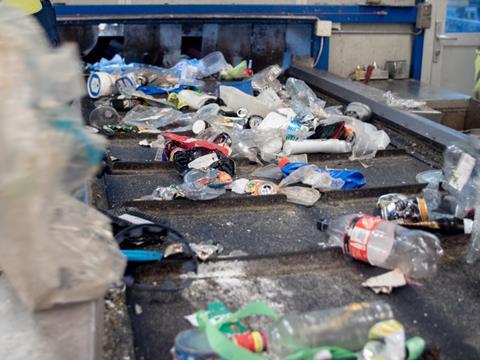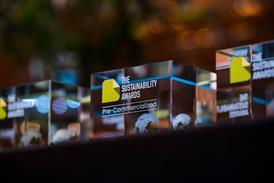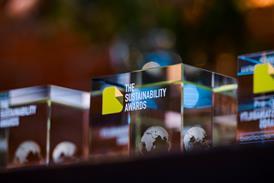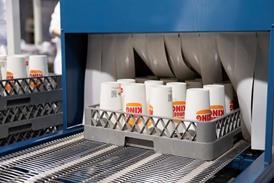
Unilever, Amcor and Asahi are currently trialling Greyparrot’s Deepnest platform, which uses AI to give brands data on how their packaging is managed throughout recycling systems. To learn more about exactly how the technology works, as well as some interesting learnings from the project so far, we spoke with Gaspard Duthilleul, COO at Greyparrot.
Let’s start with a brief overview – please could you tell us a bit about Greyparrot, the story of the company up to now, and your Deepnest technology?
Greyparrot started from a desire to tackle the global waste crisis head on and support the recycling and waste industry with AI technology. We found so much hidden value and incomplete data slipping through the cracks that could help turn the tide on the waste crisis. We wanted to tap into that opportunity and offer a solution across the industry - what isn’t measured, can’t be improved.
In the early days of Greyparrot, we travelled to Korea to capture our first data from a mobile phone rigged inside a shoebox. Now, our Greyparrot Analyzer has come on substantially, sitting above waste facility conveyor belts to capture real-time images, generating AI-powered data on the waste flows.
For Material Recycling and Waste Facilities, our Greyparrot Analyzer provides 100% visibility and insight into the waste processed through their facility, meaning they can maximise operational efficiency and make data-driven investment decisions.
Last month we launched our latest platform, Deepnest, which is for both brands and packaging producers. Deepnest’s insights provide valuable, AI-backed data on how a brand or producer’s products move through waste flows, enabling measurable insights into their waste for the first time.
Brands and producers using Deepnest will have access to a detailed, product-level view on their packaging after consumption, and their behaviour at end of life. They can assess the journey of their packaging through waste flows, what gets sorted and recycled correctly, and what gets lost to residue lines or landfill. Using these insights, brands can tailor their packaging R&D to data-backed evidence, rather than trial-and-error, and benchmark their performance against the industry and competitors.
How exactly does Deepnest work in terms of “seeing” waste and tracking it through systems?
Our Analyzer units sit above sorting facilities’ conveyor belts and use a camera and computer vision to capture real-time images of the waste flow. Using AI, we then identify characteristics that define a product: packaging type and material, food-grade and function, size, and brand and product, and can then extrapolate other information such as mass, financial value, potential GHG footprint.
We scan over 40 billion waste items each year across more than 20 countries, and our AI recognises over 111 material categories. If it tracks a new product, this will be categorised into the most similar bucket and then a new category is created that the AI will go onto recognise. A key advantage of our technology is that we go beyond the material level – which means we can derive insights that confirm brand and product recognition.
Could you let us know more about a particularly interesting/surprising piece of data that you have discovered through the work of Deepnest?
One thing we find interesting is how much the colour of packaging affects its recyclability. For example, let’s take trays, all the same material but different colours. If we look at black trays, 65-95% of these are lost in residue.
Compare that with coloured trays, and the loss is no more than 20%. And again, if you look at white trays, it’s even lower at less than 3%. It’s fascinating to see how much difference one design change can make, and that’s just if we think about colour. Material blend, size, shape – all of these have a crucial role to play in the recyclability of packaging and products.
In your view, what are some particularly impactful packaging changes that your clients have implemented because of Deepnest?
Although we’ve been working with Unilever and Asahi for some time, we’ve just commercially rolled out Deepnest so we anticipate seeing greater uptick of the platform in the coming months.
We can’t share any specific changes seen so far, but the role we play for brands can be critical, in terms of modelling the potential impact on sorting to de-risk large investments. We can also support brand decisions in retrospect, helping brands who have already taken action, with the data and insights they need to demonstrate and communicate the benefits they’ve seen.
You’re currently working with big brands like Unilever and Asahi – what data or insights are brands like this most desperate to get when they work with you?
This type of comprehensive insight, backed by real-world data, into the waste journey of their products and packaging has never been available to brands before. Using Deepnest, brands and packaging producers can see exactly how the current material, pattern, shape and size of their packaging affects the journey through waste flows. This is critical information for brands who want to optimise recyclability of their products.
The Deepnest platform then provides practical design recommendations that brands can use to stress test their R&D packaging improvements. It enables brands to properly quantify and model the impact of these packaging decisions. This can range from a smaller design change (e.g. such as shrinking the sleeve size), to a larger shift that will affect a brand’s entire supply chain (we often see this when products are transitioning from one type of plastic to another).
It’s also worth noting that it’s a critical time for brands globally. In the UK and the US, Extended Producer Responsibility (EPR) laws are coming into force and in Europe, the EU Packaging and Packaging Waste Regulation (PPWR) is becoming more stringent. Brands need insights into their specific product challenges, and a measure of their recyclability performance, in order to take proper action when navigating these laws.
If you liked this story, you might also enjoy:
The ultimate guide to the Packaging and Packaging Waste Regulation in 2025
How are the top brands progressing on packaging sustainability?
Everything you need to know about global packaging sustainability regulation in 2025
The key to increasing the use of reusable packaging in supermarkets












No comments yet